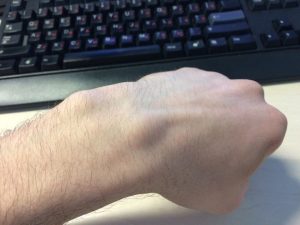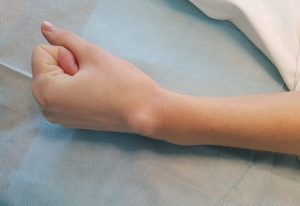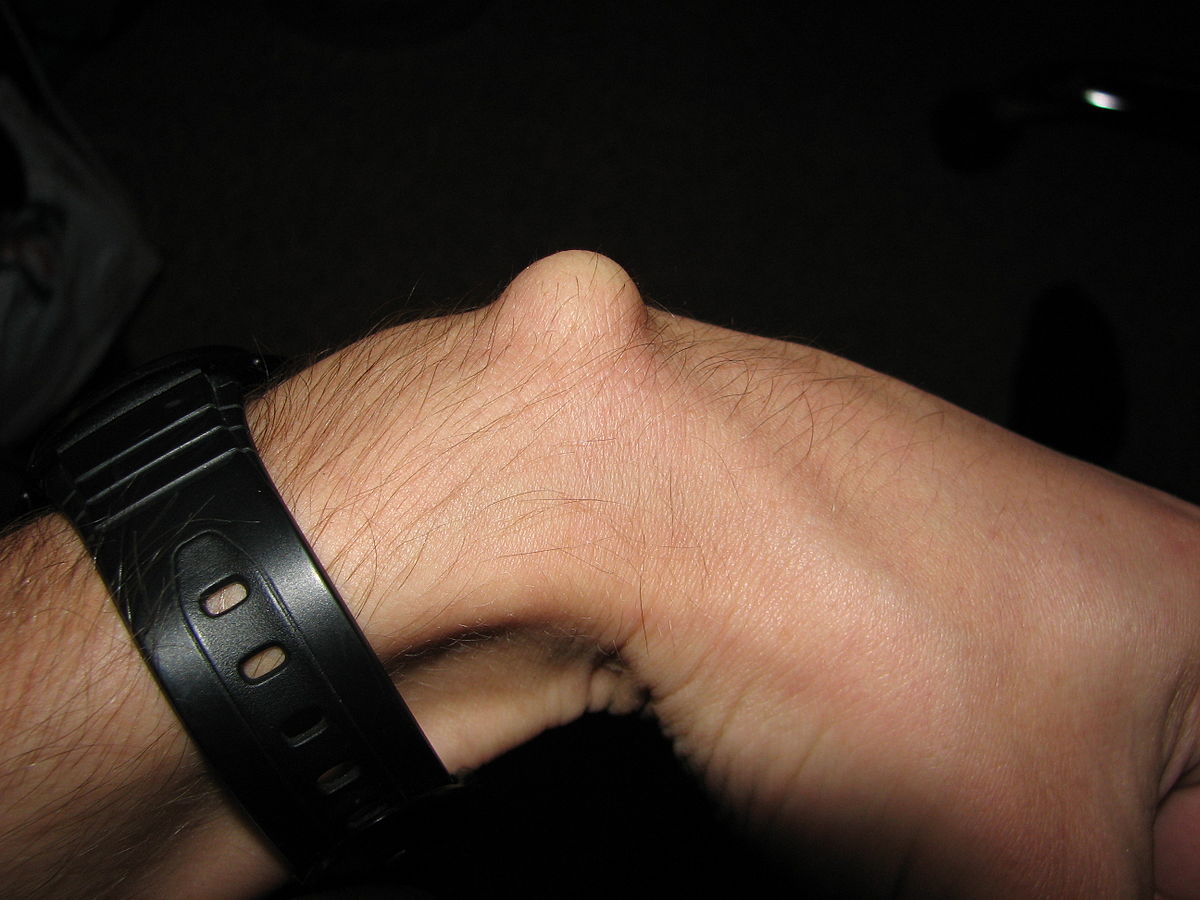Hygroma can pretty much scare a person. This is a lump that appears near the joint for no apparent reason. Many people start to panic for fear of cancer. However, the hygroma, like most other neoplasms, has nothing to do with oncology. And, nevertheless, you definitely need to see a doctor.
What it is
Hygroma (synovial cyst or ganglion) is a formation that is a capsule that is filled with a thick liquid. It is a benign cyst that mainly forms in the area of the joints. Most often, these tumors appear on the hands. More than half of all neoplasms on the hands are in hygromas.
The size of the hygroma varies from 0.5 to 6 cm in diameter. Small tumors, as a rule, do not cause discomfort, except for aesthetic. Large hygromas can be difficult. This is due to pressure on nearby nerve fibers. This leads to painful sensations, which requires prompt medical intervention. Moreover, in about 50% of cases, hygromas go away on their own¹.
According to one of the epidemiological studies, annually hygromas are formed in 3 people for every 10 thousand of the population2. In the overwhelming majority of cases, these are persons aged 20-30 years. In the elderly and children, hygromas are extremely rare. In women, such tumors appear 2-3 times more often than in men.
“Professional” hygromas
Most often, hygromas are formed in athletes using sports equipment. These are tennis players, hockey players, golfers, weightlifters and others. Musicians, typesetters, painters and turners are also often faced with hygroma. Any work involving a high load on a joint (or group of joints) is an increased risk of synovial cysts.
Hygroma symptoms
In 30-40% of cases, hygromas are asymptomatic. The only manifestation that worries a person is a thickened lump near the joint. Most often it is the wrist joint or fingers. Elsewhere, synovial cysts appear much less frequently.
Hygroms are rarely large. They grow very slowly and simply do not have time to reach large sizes.
In addition to the pineal formation, other symptoms are also observed with a synovial cyst:
limited mobility of the affected joint;
pain in the area of the cyst (as a rule, these are aching pains);
decrease or increase in skin sensitivity (slight numbness in the area of hygroma is possible);
a burning sensation, tingling sensation, crawling creeps and other sensations (occur due to pressure on nerve fibers).
More pronounced symptoms are observed when the hygroma is located under the ligament of the joint. In this case, a bump over the skin may not form. In this case, the skin over the cyst becomes rough and flaky. Subglottic hygromas often lead to dull and pressing pain. Sometimes the pain spreads to other parts of the limb.
Ic important flat @ 2x
How to distinguish a hygroma from a cancerous tumor
This can only be done by a doctor, therefore, if any formations (bumps, bumps, etc.) appear, you need to contact the clinic. Unlike malignant tumors, hygromas can grow and shrink in size. Typically, the synovial cyst shrinks at rest. After exertion, it noticeably increases in volume.
A characteristic feature of the hygroma is that the skin above it retains all its properties (color, structure, elasticity). The exception is the hygroma growing under the ligament. In most cases, hygromas on the hand remain painless on palpation.
When to see a doctor
A doctor should be consulted when a characteristic bump or lump appears.
Hygroma treatment
If the hygroma is small and does not cause problems, then you can do without special treatment. The only thing a person needs to do is get tested. Make sure it is indeed a hygroma and not another tumor.
As statistics show, in about 33% of cases, hygroma heals on its own within a few months or years (usually up to 6 years). And in 50% of cases, the period of spontaneous resorption of the cyst is 10 years³.
If a hygroma has many chambers, it grows relatively quickly or is a source of pain and inflammation, then it must be treated. The most effective way to treat hygroma is surgery. In 8-9 cases out of 10, after removal of the hygroma, relapses do not occur. With conservative treatment, in 80-90% of cases, hygromas reappear.
Despite the obvious effectiveness of surgical treatment, the doctors did not abandon conservative therapy. Let’s consider these methods in more detail.
Conservative treatment
The main non-surgical method for treating hygroma is aspiration puncture. A small puncture is made in the cyst, from where the contents are sucked out using an aspirator or syringe. After such a procedure, hormonal anti-inflammatory drugs and sclerosants are injected into the cyst cavity. The latter lead to sticking of the walls of the cyst and scarring (instead of liquid, the capsule is filled with connective tissue). If the hygroma contains pathogenic bacteria, then antibiotics are also injected into the cavity.
In some clinics, physiotherapy methods of treating hygroma are practiced. These are electrophoresis, magnetotherapy, mud therapy, paraffin applications and others. However, these therapies are ineffective. If you decide on such treatment, then be prepared for the fact that it will be ineffective.
Surgery
As a rule, indications for surgical treatment of hygroma are:
severe pain syndrome;
contractures;
rapid growth of neoplasms;
unaesthetic appearance.
If you notice the rapid growth of a cyst, then contact a surgeon as soon as possible. The larger the hygroma, the more difficult it is to remove. This is due to the compression of blood vessels and nerve https://en.wikipedia.org/wiki/Nerve fibers – it will be more difficult for the surgeon to separate the cyst.
Removal of a hygroma is a simple operation that is performed under local anesthesia. With complex localizations of the hygroma and / or its large size, general or conductive anesthesia is allowed (complete anesthesia of the desired area).
When removing the hygroma of the joint, it is important to remove all cyst cells. Otherwise, the likelihood of a relapse of the disease is high. After removing the neoplasm and rinsing the capsule, a drainage tube is installed to drain the fluid. As a rule, after 1-2 days the tube is taken off. A pressure bandage is applied to the patient’s wound, and the limb is fixed with a plaster cast. Already on the 7-10th day, the postoperative wound heals and the patient’s stitches are removed.
ethnoscience
With hygroma, treatment with folk remedies includes compresses with sea salt, ointments based on yolk and vinegar, as well as rubbing the cyst with alcohol tinctures. Such treatment is ineffective. This will only waste your time. It is absolutely impossible to do this, especially if the hygroma increases in size.
